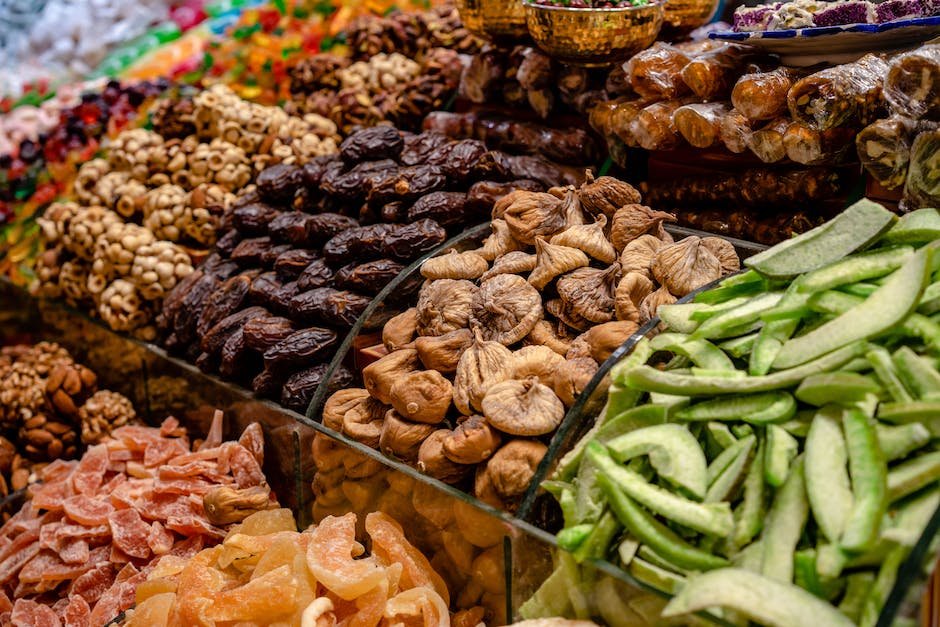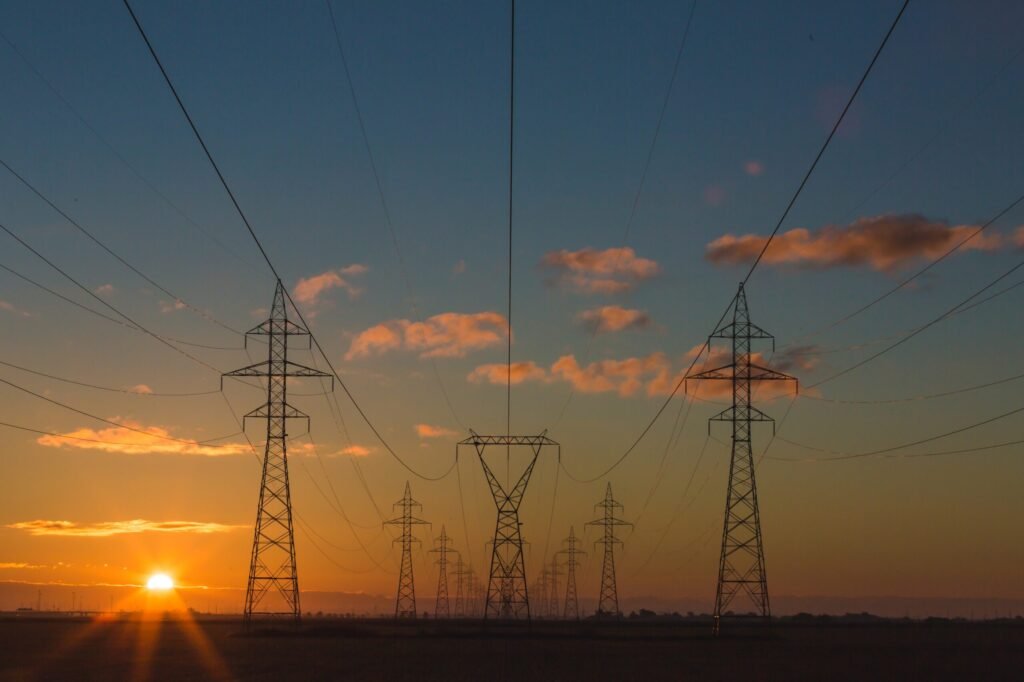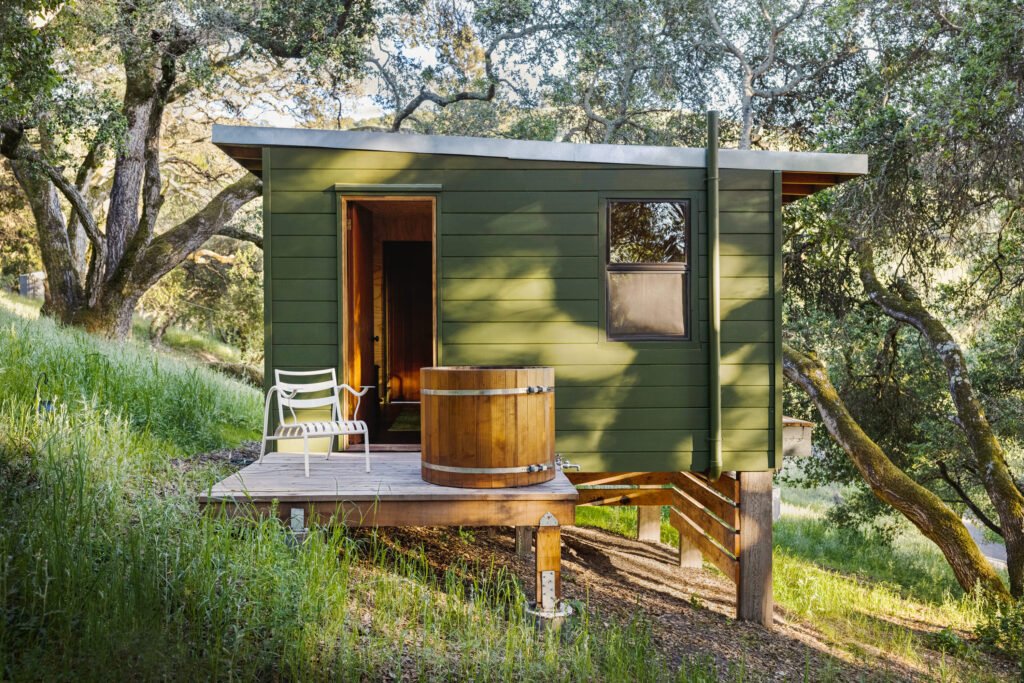Now Reading: The Importance of Food Preservation in Off-Grid Living
-
01
The Importance of Food Preservation in Off-Grid Living

The Importance of Food Preservation in Off-Grid Living
Imagine a life nestled deep within nature’s embrace, where verdant landscapes stretch as far as the eye can see and the song of birds becomes your morning wake-up call. Off-grid living—a blissful existence that offers a respite from the chaos of modern life—has an undeniable allure. Yet, as enchanting as it may sound, this way of life brings its fair share of challenges, one of which is ensuring a steady food supply. In the absence of readily available groceries and refrigeration, the significance of food preservation takes center stage. It becomes the key to unlock sustenance, the key to unlocking the full potential of off-grid living.
Table of Contents
- The Essence of Preserving Food in Off-Grid Living
- Understanding the Challenges Faced in Off-Grid Food Preservation
- Exploring Effective Techniques for Long-Term Food Storage
- Maximizing Nutritional Value and Minimizing Waste through Preservation Methods
- Essential Tips and Recommendations for Successful Food Preservation in Off-Grid Living
- Q&A
- In Conclusion

The Essence of Preserving Food in Off-Grid Living
The Art of Preserving Food in Off-Grid Living
Imagine a life where the flickering of city lights is replaced by the serenade of crickets, and the hum of refrigerators is silenced by the whispers of nature. Off-grid living offers a unique sense of freedom, self-sufficiency, and a deep connection with the world around us. Embracing this lifestyle requires a shift in perspective, particularly when it comes to preserving food. Without the convenience of modern appliances, the art of food preservation rises to the surface as an essential skill.
Preserving food can be a delightful journey, a tradition woven within the tapestry of human history. With careful planning and a touch of creativity, one can transform seasonal abundance into a bountiful feast that lasts throughout the year. Here are some tried and true techniques for preserving food in off-grid living:
- Canning: This age-old method has stood the test of time. Whether it’s crisp pickles or succulent jams, canning allows us to capture the very essence of fresh produce. By sealing jars and subjecting them to heat, we create an airtight environment that prevents spoilage, keeping flavors intact for months on end.
- Drying: Unleash the power of the sun and air with this ancient preservation method. From herbs and fruits to jerky and herbs, the possibilities are endless. Drying removes moisture from food, inhibiting the growth of bacteria and mold, resulting in flavorful treats that can be stored for years.
- Fermenting: Dive into the captivating world of fermentation and watch as ordinary ingredients undergo a miraculous transformation. Sauerkraut, kimchi, and kombucha are just a few examples of the tangy delights that can be achieved through this preservation technique. Harness the natural process of fermentation to preserve food while enhancing its nutritional value.
When it comes to off-grid living, preserving food is not merely an act of necessity, but an embodiment of the essence of self-sufficient living. By mastering the art of preservation, we honor the abundance provided by Mother Earth and ensure that no harvest goes to waste. So, roll up your sleeves, unleash your inner creative, and let the magic of preserving food empower your off-grid adventure.

Understanding the Challenges Faced in Off-Grid Food Preservation
When it comes to off-grid living, one of the most critical challenges faced is food preservation. Without access to conventional refrigerators or freezers, finding innovative solutions becomes a necessity. It is essential to understand the unique obstacles that arise in this context and explore alternative methods to keep food fresh and safe.
1. Limited Energy Options: Off-grid living often means limited access to electricity or unreliable power sources. This creates a significant obstacle as traditional refrigeration methods rely heavily on electricity. As a result, individuals need to explore energy-efficient options like solar-powered or propane refrigerators, which can provide a reliable cooling solution without relying on the conventional power grid.
2. Temperature Fluctuations: Unlike the controlled environments created by modern refrigeration, off-grid food preservation faces the challenge of temperature fluctuations. Inconsistent temperatures can result in spoilage and foodborne illnesses. Therefore, it becomes crucial to find ways to regulate and monitor temperatures effectively using alternative techniques such as root cellars, evaporative cooling, or earthbag refrigeration.
3. Limited Storage Capacity: Off-grid living often entails limited space, making traditional large-scale refrigeration units impractical. With space constraints, individuals need to think creatively and utilize smaller-scale storage options like specially designed coolers, canning, pickling, and dehydrating methods to maximize their food storage capacity. These techniques not only extend the shelf life of food but also provide opportunities for culinary experimentation and unique flavor development.
is the first step towards finding sustainable solutions. By embracing alternative methods, individuals can adapt to these obstacles and ensure a continuous supply of fresh and safe food even in remote or off-grid locations.

Exploring Effective Techniques for Long-Term Food Storage
When it comes to long-term food storage, there are various techniques that have proven to be effective in preserving freshness and nutrition. These methods not only help in emergency situations but can also be useful for stockpiling supplies or preserving seasonal produce. Here, we explore some innovative approaches to ensure your food stays edible for an extended period.
Vacuum Sealing: This technique involves removing the air from food packaging to create a vacuum seal, which prevents the growth of bacteria and extends the shelf life of the food. Vacuum-sealed bags or jars can be used to store a wide range of items such as grains, dried fruits, and even cooked meals. This method is particularly beneficial for items like cereals and snacks, which are prone to spoilage due to exposure to air.
Canning: Canning is a popular method for preserving fruits, vegetables, and even meats. The process involves heating the food to destroy any microorganisms, sealing it in jars or cans, and creating a vacuum seal to prevent spoilage. Canned goods can last for years, making them a reliable option for long-term food storage. It’s essential to follow proper canning procedures and guidelines to ensure the safety and quality of the preserved food.
Dehydration: Dehydration is a time-honored method of removing moisture from food, inhibiting bacterial growth, and preserving the nutritional content. Fruits, vegetables, meats, and herbs can be dehydrated using various techniques, including sun-drying, air drying, or using specialized dehydrators. The dehydrated items can be stored in airtight containers or vacuum-sealed bags, making them suitable for long-term storage.
By employing these effective techniques, you can ensure that your stored food remains high in quality and retains its nutritional value over an extended period. Whether you’re preparing for emergencies or simply looking for ways to make the most of your groceries, these methods offer practical and reliable solutions for long-term food storage.

Maximizing Nutritional Value and Minimizing Waste through Preservation Methods
Preservation methods play a crucial role in maximizing the nutritional value of food and minimizing waste. By employing various techniques, we can ensure that the nutrients in our food are preserved for a longer time, reducing the likelihood of spoilage and promoting sustainability.
One of the most effective preservation methods is freezing. Freezing not only locks in the freshness of fruits, vegetables, and meats but also helps retain their nutritional content. It is an excellent way to prolong the shelf life of these foods and reduce food waste. To preserve food through freezing, make sure to properly package it to avoid freezer burn and label it with the date of freezing to track its freshness.
Another method gaining popularity is canning. Canning allows the preservation of various foods by sealing them in airtight containers. This technique not only extends the shelf life of food items but also preserves their nutritional value. When canning, it is essential to use quality ingredients, proper sterilization techniques, and follow tested recipes to ensure food safety. Canned foods can be stored for an extended period, reducing waste and allowing us to enjoy nutritious meals all year round.
- Freezing preserves freshness and nutritional content of food.
- Proper packaging and labeling are important to avoid freezer burn and keep track of freshness.
- Canning is an effective method for preserving a wide range of foods.
- Quality ingredients and proper sterilization techniques are crucial for safe canning.
- Canned foods have a longer shelf life and allow for year-round access to nutritious options.
Essential Tips and Recommendations for Successful Food Preservation in Off-Grid Living
When it comes to off-grid living, food preservation becomes crucial in order to ensure a successful and sustainable lifestyle. Here are some essential tips and recommendations for preserving food without relying on grid electricity:
- Root cellaring: Create a root cellar to store root vegetables such as potatoes, carrots, and onions. The cool and dark environment helps extend their shelf life.
- Canning: Invest in a pressure canner to safely can vegetables, fruits, and even meats. This process involves sealing food in jars at high temperatures, killing bacteria and preventing spoilage.
- Drying: Utilize the power of the sun to dry herbs, fruits, and vegetables. Dehydrating food helps preserve nutrients while reducing the risk of mold or bacteria growth.
- Fermentation: Explore the art of fermentation to create delicious and preserved foods like sauerkraut, kimchi, and pickles. Fermented foods not only have a longer shelf life but also promote gut health.
- Smoking: Set up a smokehouse to smoke meats and fish. Smoking not only adds flavor but also acts as a natural preservative, reducing the chance of spoilage.
In addition to these preservation techniques, it’s important to emphasize the role of proper packaging, labeling, and rotation of stored foods. Keep a detailed inventory of preserved items to ensure timely consumption and prevent waste. Lastly, always prioritize food safety by following recommended guidelines for each preservation method.
Q&A
Why is food preservation important in off-grid living?
Food preservation is crucial in off-grid living as it ensures a constant food supply, reduces waste, and helps individuals or communities survive during times of limited access to fresh produce.
What are the different methods of food preservation that can be used in off-grid living?
There are various methods available, including canning, drying, smoking, fermenting, salting, and pickling. Each method has its advantages and can be utilized based on the type of food and available resources in an off-grid setting.
What are the benefits of canning food in off-grid living situations?
Canning food allows for long-term food storage without the need for electricity. It helps preserve the nutritional value of the food while protecting it from spoilage, making it an ideal method for off-grid living where refrigeration may not be readily available.
How does drying food contribute to food preservation in off-grid living?
Drying food removes moisture, preventing the growth of bacteria, mold, and yeast, thereby extending shelf life. This method also reduces the weight and volume of food, allowing for compact storage, making it beneficial for off-grid living with limited space.
Why is smoking an effective means of food preservation in off-grid living?
Smoking not only imparts unique flavors to food but also inhibits the growth of bacteria and fungi. It extends the shelf life of meats and fish, making it a valuable preservation method in off-grid living where refrigeration options may be limited.
How does fermentation contribute to food preservation in off-grid living?
Fermentation creates an acidic environment that inhibits the growth of harmful bacteria while fostering the growth of beneficial microbes. This method not only preserves food but also enhances its nutritional value, making it ideal for off-grid living where fresh produce may be scarce.
What role does salting play in food preservation for off-grid living?
Salting draws out moisture from food, inhibiting the growth of bacteria. It is particularly effective for preserving meats, such as bacon and jerky, and should be combined with other preservation methods like smoking or drying for optimal results in off-grid living.
How does pickling contribute to food preservation in off-grid living scenarios?
Pickling involves soaking food in a solution of vinegar or brine, which creates an environment where bacteria cannot thrive. It extends the shelf life of fruits, vegetables, and even eggs, providing an excellent preservation option for off-grid living situations.
What are the advantages of food preservation in off-grid living beyond sustainability?
Aside from the sustainable aspect, food preservation in off-grid living promotes self-reliance, reduces dependency on frequent grocery store visits, and ensures the availability of nutritious food during emergencies or natural disasters.
In Conclusion
As we come to the end of our exploration into the vast realm of off-grid living and the crucial role that food preservation plays within it, we are left with a sense of awe and appreciation for the immense value it brings to our self-sufficient existence. Amidst the enchanting wilderness and stunning isolation lies the undeniable power of preserving our nourishment.
In this article, we have unearthed the secrets of ancient techniques, entwined with the marvels of modern innovation. From salting and canning to smoking and dehydrating, each method preserves not just a simple sustenance, but a piece of our journey towards independence.
Delicious flavors and tantalizing aromas waft through the pages, reminding us of the harmonious dance between nature’s bounty and our tireless efforts. It is in the midst of the preserving process that we truly embrace the intricate balance between science and art, where a humble jar or a simple smokehouse becomes a vessel of tradition, resilience, and self-reliance.
Through the immersive world of off-grid living, we are called upon to unlock our resourcefulness and witness the extraordinary metamorphosis of ingredients. The luscious fruits morph into jars of life-preserving jellies, vibrant vegetables transform into jars of summertime abundance, and succulent meats manifest as enduring treasures, ready to sustain us through harsh winters and unexpected trials.
Beyond the justifiable pride that comes with preserving our food, we glimpse a much grander tapestry unfolding. A tapestry woven with threads of sustainability, respect for mother nature, and a profound connection to our ancestors who gracefully passed down these age-old techniques.
But the importance of food preservation in off-grid living extends far beyond self-sufficiency and humble homage; it resonates with an urgent message for the world at large. As we dodge the pitfalls of wastefulness and embrace the noble path of sustenance preservation, we become the guardians of the planet, securing a brighter future for generations to come.
In conclusion, being in tune with history’s whispers and the harmonies of nature instills in us a powerful realization: the simple act of preserving our food is, in essence, preserving ourselves. It is an act of reclaiming control over our sustenance, building resilience in uncertain times, and cherishing the sacred connection between food, nature, and the vibrant spirit within us.
So let us embark on this journey together, embracing the enchanting knowledge of preservation, and forever altering our perspective on food and its incredible significance in the world. With each jar we seal, smokehouse we tend, and dehydrator we operate, we are not just embarking on an off-grid adventure; we are planting seeds of nourishment, self-reliance, and hope for a future in which we are truly connected to the very essence of existence.
As an affiliate, my content may feature links to products I personally use and recommend. By taking action, like subscribing or making a purchase, you’ll be supporting my work and fueling my taco cravings at the same time. Win-win, right?
Want to read more? Check out our Affiliate Disclosure page.





